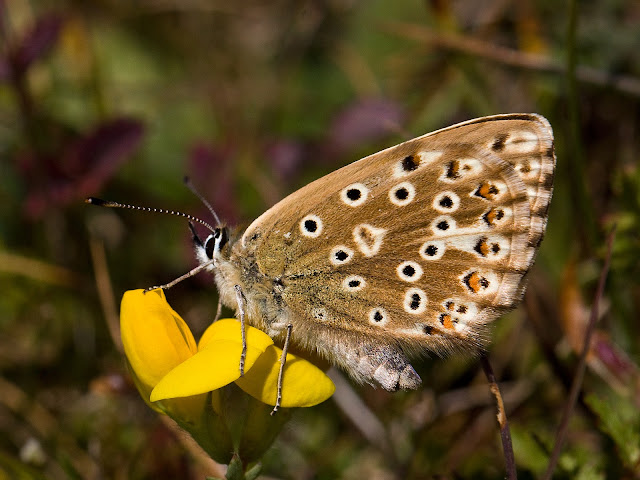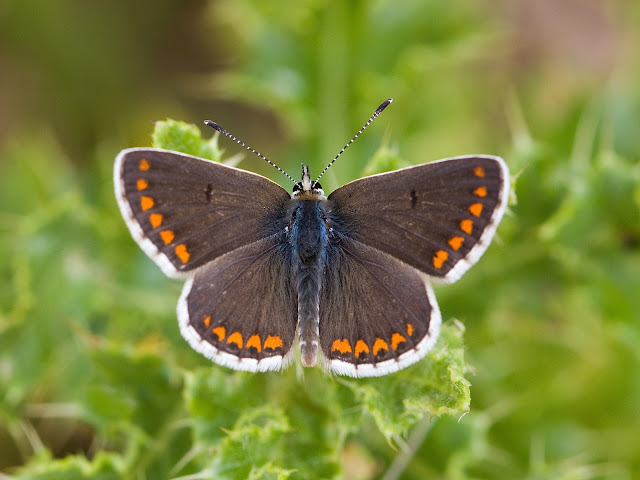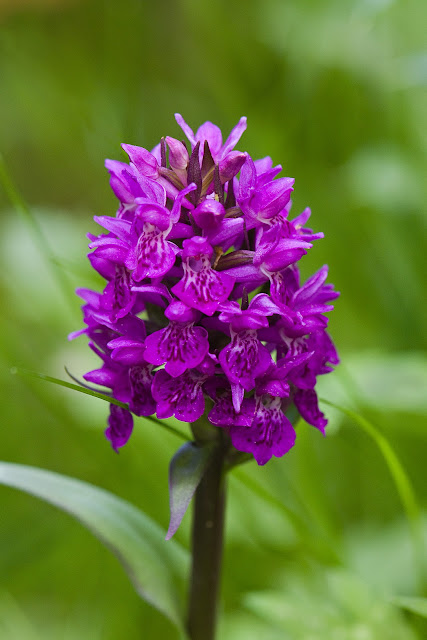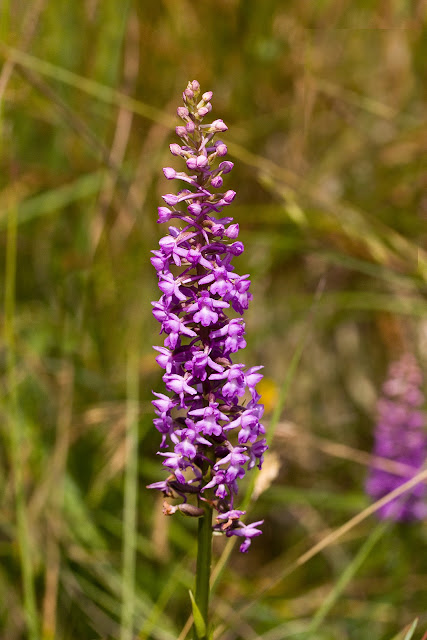The summer quiet patch has ended and the second half of the Butterfly year seems to going really well. My impression is that there are more butterflies around than last year although it may just be that in the hot weather they are more active than usual.
I should be able to see 46 butterflies in the year and that is without travelling outside of Sussex. As I was falling well short of that number I have spent the last few days trying to fill some of the gaps. Most are now annual pilgrimages, Newtimber Hill for the Silver-spotted Skippers, Windover Hill for the Chalkhill Blue and Grayling, and the more recent addition of Knepp for the Purple Hairstreaks.
Sometimes it seems a bit pointless going round seeing the same butterflies and taking the same pictures but then there are never two years the same. Numbers vary, habitats change, some locations fade away and others open up. Just seeing the changes taking place is part of the enjoyment - most of the time! There is also that exceptional picture that is still out there waiting to be taken.
 |
| Silver-spotted Skipper |
Silver-spotted Skipper, a feisty little butterfly with a good turn of speed. It always reminds me of the Pearl Bordered and Small Pearl Bordered. You think you are following its movement and then a sudden change of direction or speed and its gone.
 |
| Silver-spotted Skipper |
 |
| Silver-spotted Skipper |
 |
| White Admiral |
 |
| Large Skipper |
But I am still missing the Essex Skipper and there doesn't seem to be that many Small Skippers about.
 |
| Peacock - the dark side! |
 |
| Purple Hairstreak |
Purple Hairstreak, my bogey butterfly. I see lots of them but I just don't seem to be able to get a good open wing shot.
 |
| Chalkhill Blue |
 |
| Chalkhill Blue Female |
 |
| Chalkhill Blue Male |
 |
| Common Blue |
 |
| Grayling |
Grayling, a good two hours of searching and I was only able to find one butterfly at my usual location. Recent reports have shown better returns lower down the slope in Deep Dean.
 |
| Brown Argus |
 |
| Brown Argus |
Still missing a few, Dark Green Fritillary, White Hairstreak, Essex Skipper, Brown Hairstreak and Clouded Yellow. Also a Small Tortoiseshell which I must have seen but have not recorded. Might even get a Long-tailed Blue or perhaps a Camberwell Beauty. Dream on!



































